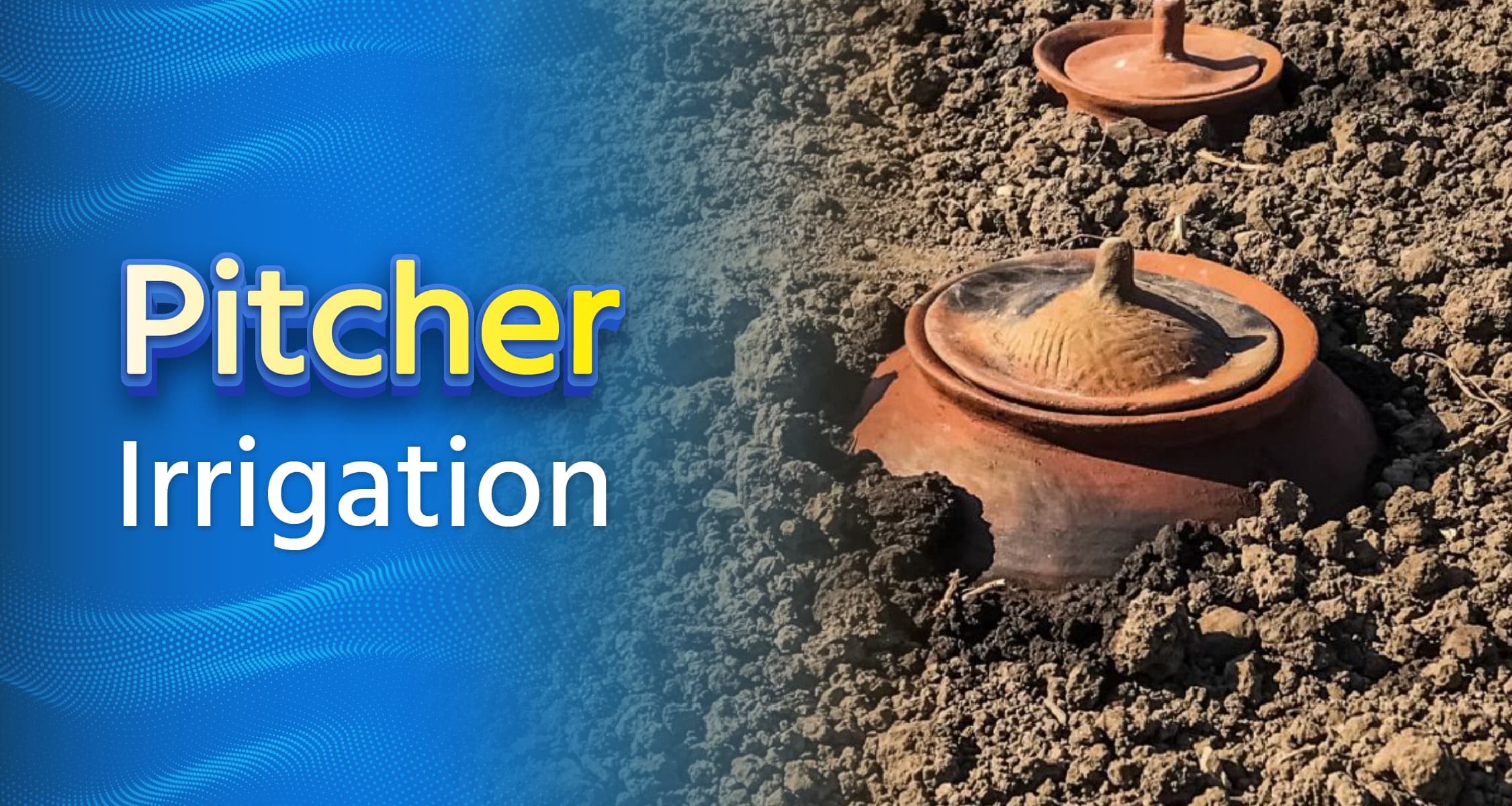Matka Irrigation (Pitcher Irrigation/Earthen Pot Irrigation)

We all know how crucial irrigation is for the growth and development of plants. Often, if irrigation is not done at the right time, plants begin to wither. Conversely, excessive irrigation can cause the roots of plants to rot. However, in many cases, plants do not receive an adequate amount of water due to a lack of water availability. Irrigating in water-scarce areas can be a significant challenge to farmers. To address this issue, the "Matka" irrigation (also known as pitcher irrigation and earthen pot irrigation) method can be a boon for farmers. Through this post, let us explore in detail the benefits and the process of the matka irrigation method.
What is Matka Irrigation/ Pitcher Irrigation?
Pitcher irrigation is a unique technique in which earthen pots (matkas) are filled with water and buried in the ground near the roots of plants or trees. A small hole is made in the pot, allowing water to drip slowly and directly into the plant roots. This ensures that the roots receive the necessary amount of water, helping the plants stay green and healthy.
This method of irrigation is a simple and effective method particularly suitable for small-scale farming. It is especially useful in areas where water is scarce and where drip irrigation systems are not available. However, this method is not suitable for large-scale farming, as it requires significant labor and time to irrigate extensive areas.
Benefits of Pitcher Irrigation
- Water Conservation: This irrigation is a highly efficient method of watering crops, as it delivers water directly to the roots of the plants. This reduces water wastage and helps in conserving water resources. During the summer, the water in the pot can last from three days to a week. This method can save up to 70% of water.
- Minimal Material Requirement: Matka irrigation is a simple and cost-effective method of irrigation that requires minimal materials.
- Improved Plant Growth: With this method of irrigation, plants receive the right amount of water at the right time, which can improve plant growth and increase yield. Plants can grow 20 to 30% faster using this method.
- Reduced Weed Growth: Matka irrigation delivers water directly to the roots of the plants, keeping the surrounding soil dry. This prevents weeds from getting enough water to grow, reducing weed problems in the field. This method also minimizes the need for chemical herbicides and manual weeding.
- Reduced Soil Erosion: Matka irrigation reduces the amount of water flowing over the soil surface, helping to minimize soil erosion.
- Cost Reduction: This method of irrigation requires less investment compared to other irrigation systems.
- Labor and Time Savings: Matka irrigation eliminates the need for frequent watering, saving labor and time.
How to Irrigate Using a Matka (Clay Pot)?
- Preparing the Matka: First, clean a clay pot thoroughly and make a small hole at its bottom.
- Installing the Matka: Dig a hole near the plants and place the matka in it.
- Covering the Hole: After installing the matka near the plants, cover the hole with a stone or a piece of cloth to prevent soil from entering the matka.
- Water Seepage: Water will slowly seep through the small hole at the bottom of the matka into the soil, providing adequate moisture to the roots.
- Filling with Water: Fill the matka with water as needed, typically once a day.
- Maintenance: Regularly clean the matka to prevent the growth of algae and other microorganisms.
Which irrigation method do you use for your crops? Share your answers and experiences with us in the comments. For more information like this, follow the 'Desi Jugaad' channel now. Don't forget to like and share this post to reach more farmers.
Frequently Asked Questions (FAQs)
Q: What is the Matka Irrigation System?
A: Matka irrigation is a traditional and effective irrigation system used especially in rural areas of India. It involves using a pot filled with water for irrigation. This method helps in conserving water and reducing water wastage.
Q: How many types of irrigation are there?
A: There are several types of irrigation methods used in agriculture, including surface irrigation, sprinkler irrigation, drip irrigation, subsurface irrigation, and center pivot irrigation. Each method has its own advantages and disadvantages, and the choice of irrigation method depends on factors such as the type of crop, soil type, climate, and water availability.
Q: What is the best irrigation system?
A: The best irrigation system depends on various factors like the type of crop, soil type, climate, and water availability. However, drip irrigation is considered one of the most efficient irrigation systems as it delivers water directly to the roots of the plants, thus conserving water and reducing weed problems.
Please login to continue

Get free advice from a crop doctor
